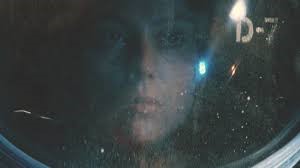Comparative essay
The Zodiac is a film based on the pseudonym of an unidentified serial killer who operated in Northern California from the late 1960s to the early 1970s. The film was directed by David Fincher and was based off Robert Graysmith’s nonfiction book “zodiac”. Fincher is a golden globe winning director, He’ well-known for directing Se7en and Fight Club. Most of his films stick to the thriller/mystery genre and so he suited this film perfectly. Fincher also obsessed with the subject and was extremely meticulous to make sure that the film was an accurate representation to the real events.
The Zodiac is mainly focused on Robert Graysmith (Jake Gyllenhaal) who worked at the San Francisco Chronicle as a cartoonist where he quickly became obsessed with the zodiac killer’s case and devoted his life to catch him, He works alongside Paul Avery (Robert Downey, JR.) who is the criminal journalist at the Chronical. They both strive to catch the killer and become very involved in the investigation both working with and against the detective David Toschi (Mark Ruffalo). The Zodiac killer taunted the police with letters and ciphers bragging about what he had already done to his victims or what he will do. The case remains one of the most infamous unsolved cases in history.
The Boston strangler is loosely based on the murderer or murderers of 13 women in the Boston area during the early 1960s. It was directed by Richard Fleischer who directed the first Dr Dolittle and The Narrow Margin. Fleischer had to overcome some hurdles when creating the horrific murder scenes due to the restrictions at the time.
Due to Hays code which was the set of industry moral guidelines that was applied to most United States motion pictures released by major studios from 1930 to 1968. These rules meant that films such as the Boston strangler had to be careful with how graphic the scenes were. This is why Richard Fleischer chose to shoot the murder scenes like he did. Rather than showing the killings themselves he showed the reactions of the people who found the body’s which was equally as horrific.
The Boston Strangler was one of the earliest serial killer films which paved the way for directors like David Fincher with his films like Se7en and The Zodiac. In the 60’s a “serial killer” was not a commonly recognized genre of film because it hadn’t been explored much. One of the first major serial killer films was psycho which definitely influenced Fleischer when making The Boston Strangler. This is my favourite genre of film because of how the directors portray the killers and show their motives
The film focuses on the whole city’s fears towards the strangler, the audience is shown interviews with the citizens showing their fear because of how unpredictable the killer was. The same applies for The Zodiac as his killings didn’t have a pattern and so the whole city was in fear. I think that the directors exaggerate the idea of the killings being random to scare the audience as the films are set in major cities and so one of the motifs of these films is to strike fear into the audience and make them aware of serial killers.
The zodiac was released in 2007
The Boston strangler was released in 1968 just 4 years after he was caught, this timeline means the story was still relatively fresh in the public’s memories and so would have been very meaningful for audiences of that time. As well as the strangler, there was another famous killer in the 60’s nicknamed “the railway sniper”. The sniper was active between 1963-1978 so the Boston Strangler would have really struck fear into the audience at the time.
When watching both films I realised many similarities and differences for example the layout of the films was similar in that it was a race against the clock to find the killer before he killed again. The editing in Boston strangler is very unique because it uses a lot of split screen shots when showing the murders which u don’t really see in modern films. Fleischer uses these split shots to show the reaction of the people who find the murdered bodies rather than the actual killings, this technique creates a theme for the audience so the murders stand out in the film. In The Zodiac Fincher shows the killings but never the killers face to add confusion and keep the audience guessing.
Fincher is considered by many as an auteur because of his masterful use of lighting, he is extremely skilled at creating an atmosphere just through the use of lighting, Vashi Nedomansky said “the final image is Dark Clarity and matches the mood and tone” I find this depiction represents exactly what the atmosphere is like in Finchers films, especially The Zodiac with its dark story line to coincide. Richard Fleischer on the other hand is not as renowned for any specific specialities, I personally thought that in The Boston Strangler the main element is the editing.
When we watch old thrillers today we don’t find them too shocking because modern cinema is much more graphic but the Boston strangler is shocking even today, not because of the visual aspect but because of the constant references to rape and the details given by the policemen in the film. I found the film shocking and so can’t imagine what the audiences of the 60’s were feeling after it but I’m sure it would have had a big affect on them. I think this is the main difference between the films, audiences in the 60’s wouldn’t be able to handle The Zodiac because of the graphic killings and the sinister undertones throughout the film.

